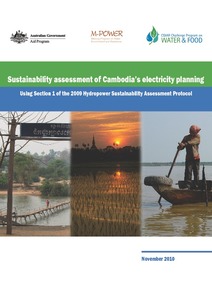Moving towards environmentally sustainable water allocation in South Asia.
This paper highlights the need in South Asia for basin-wide water allocation plans that include environmental requirements. This paper also describes the application of a basin planning model (i.e., Water Evaluation and Planning model or WEAP) to assess present and alternative water management options which incorporate environmental flows in the Upper Ganges River in India (total area: 87000 km2). The paper summarizes the environmental flow assessment methodology which was conducted through a multidisciplinary, multi-stakeholder approach (Building Blocks Methodology or BBM).



